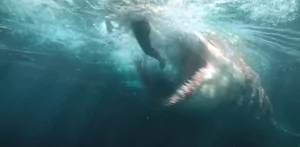I do not like cartoons. When I was a child, I preferred reading and drawing to watching television, cartoons included–which makes the fact that I am a movie reviewer somewhat ironic. Anyways, cartoons always felt boring to me: unrealistic colorful characters talking and acting like real people looked too far-fetched to relax and enjoy. Be it the hysterical madness of old Looney Tunes, Disney’s cheesy fairy tales, or Pixar’s 3D family movies, to me it is all the same. I guess you can picture me as an arrogant, heartless cartoon hater. Which I am not, but whatever.

✅ AI Essay Writer ✅ AI Detector ✅ Plagchecker ✅ Paraphraser
✅ Summarizer ✅ Citation Generator
Considering all this, imagine my own surprise when I ran across an animated picture I liked. I am an old and devoted fan of Wes Anderson’s talent–you must know him by such movies as “The Grand Budapest Hotel,” “Moonrise Kingdom,” or “The Life Aquatic With Steve Zissou” (my personal favorite). I always enjoyed the camerawork and coloring in Anderson’s movies–as well as the casts, the slight absurdity of stories and characters, and the overall sensation of tragedy and comedy blending together. When I found out that Wes Anderson directed and wrote the screenplay for the cartoon named “Isle of Dogs,” I felt a strange amalgam of doom and enthusiasm. I thought, “Okay, I am not a dog lover, cartoons are boring…but damn, it’s Wes Anderson! It cannot be bad.”
And I was right. I absolutely loved “Isle of Dogs,” every aspect of it.
To start with, it is not a typical cartoon. If it was yet another 3D, sugary animation, I swear to God I would never watch it. But “Isle of Dogs” is a film created with the unusual stop-motion technique. Basically, you take a puppet, place it into a setting, and take a shot with a camera. Then you move a puppet a little bit and take another shot. This way, one slight change after another, you make a sequence of photographs which altogether convey the puppet’s “motion.” Stop-motion is an old-school technique and requires a lot of resources, time, and effort–which is why, I guess, no one uses it anymore. This is also why in 2018, stop-motion looks charming.
In other words, “Isle of Dogs” is a completely handmade cartoon. Is there anything more stunning than that in cinema in the age of VR and 3D?
The story is surprisingly noir, although not absurd. In the not-so-distant future, a dog-flu virus spreads across the city of Megasaki, Japan. The city’s mayor Kobayashi–whose portraits will definitely remind you of the “Big Brother is Watching You” posters–orders to send all dogs to Trash Island. To make an example, the first dog to be exiled is Kobayashi’s dog Spots.
Kobayashi has a foster child, Atari–a boy with a stubborn and strong-willed character. It turns out that Spots was Atari’s bodyguard dog, and in order to find him, Atari hijacks a plane and sets off to Trash Island.
This is as far as I can go without spoiling the pleasure of you watching “Isle of Dogs” on your own. From now on, I will only comment on the movie’s features and nuances.
And there are plenty. I liked that almost all the characters but dogs speak in Japanese. The voiceover translation was provided only when it was necessary for understanding the plot. Other than that, you can only guess what the characters are talking about. And I think this is a perfect solution for the movie that tells the story from the perspective of dogs. Can dogs really understand what people are saying to them? Doubtfully. Except several commands they are specifically taught to understand, dogs can only guess approximately what humans want from them.
And so did the audience when watching the “Isle of Dogs.” There were multiple times when I found myself wondering what the human characters in the movie were saying judging by their intonations, facial expressions, and behaviors. Just like a dog probably would! To me, this is an ingenious way to create the sense of immersion, and to make the audience feel for the main characters.
Which are, by the way, all dogs. There is Atari, of course, and some other characters, but the main focus is put on the stray dog named Chief, and his company of dogs: King, Rex, Boss, and Duke. All outcasts from Megasaki, they find Atari when his plane crashes on Trash Island, and help him in his quest to find Spots. Personally I found Chief to be the most dramatic character of all. To be honest, sometimes I could not distinguish between Rex, Duke, and King–but Chief was always in the center of my attention.
And it is not because of the voice acting. On the contrary, it was beautiful: Edward Norton, Bill Murray, Jeff Goldblum, and Bob Balaban did a great job breathing life into “their” dogs. It is just that I did not find their characters as distinctive and vivid as Chief. His story is somewhat dark, even noir: when he reveals how he was exiled from Megasaki, you can almost picture him turning on his Macintosh and smoking a cigarette in Humphrey Bogart’s manner. There is a love story (of course), there is dramatic tension, a fight for justice, and revelations in the end.
There is some of distinctive Anderson’s camerawork: dramatic juxtapositions of the front and the background, colorful accents. The picture is almost geometrically proportionate. Sometimes it felt like each frame was built according to the Golden Ratio. Combined with the unique animation originating from stop-motion, all this created a charming visual atmosphere, making you feel like you are at home during the rainy evening, watching your children play with dolls under the lampshade.
The sound design and music were awesome too: traditional Japanese melodies and energetic drums made me feel like I was watching Akira Kurosawa’s “Seven Samurai.” It emphasized the drama, and at the same time strengthened the comical effect. Such serious music for puppet action! It sounded almost ridiculous, but never out of place.
Overall, I can say now that the “Isle of Dogs” has probably become the first cartoon in my life that I truly liked. I admit that I would not have watched it if Wes Anderson’s name was not on it, but I am glad I did. The “Isle of Dogs” is a fine example of taste, talent, and hard work put together. A great movie to watch on your own or with your family.
Follow us on Reddit for more insights and updates.




Comments (0)
Welcome to A*Help comments!
We’re all about debate and discussion at A*Help.
We value the diverse opinions of users, so you may find points of view that you don’t agree with. And that’s cool. However, there are certain things we’re not OK with: attempts to manipulate our data in any way, for example, or the posting of discriminative, offensive, hateful, or disparaging material.